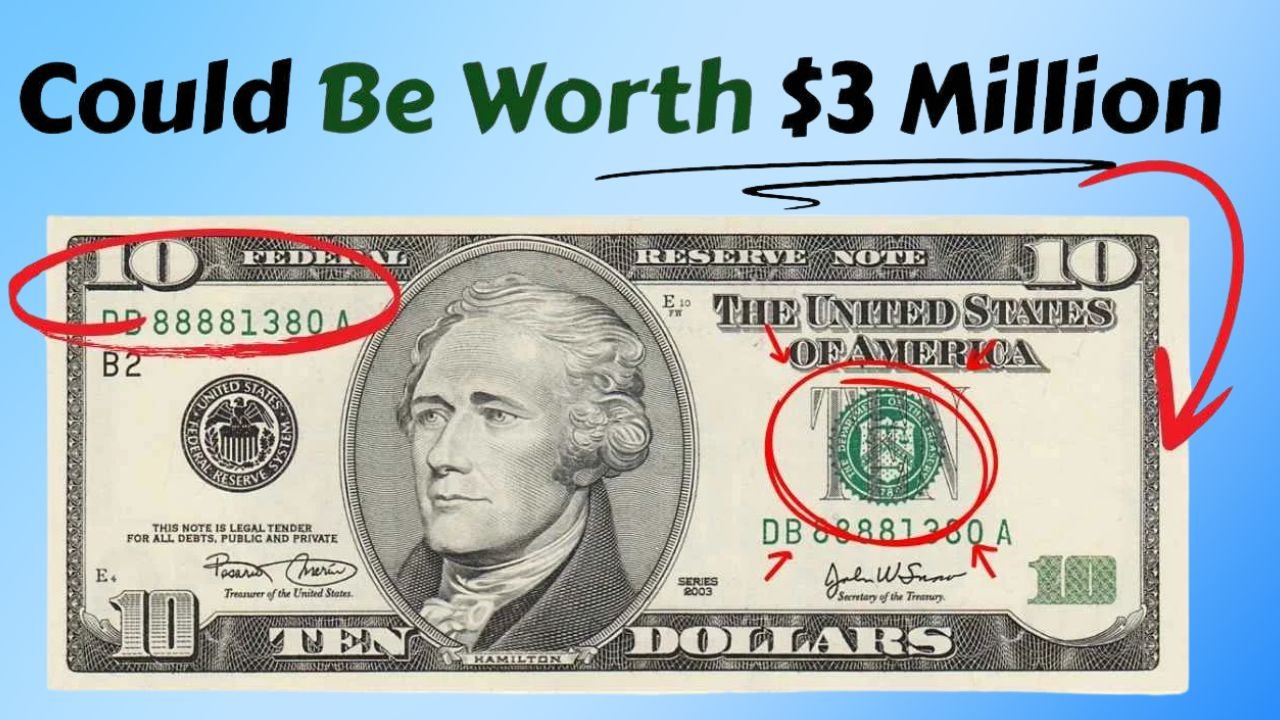Imagine finding a $10 bill in your wallet worth $3 million! A retiree in Florida recently discovered this dream come true. Hidden in an old drawer, this rare bill turned his life upside down. Curious if you have a hidden treasure? Let’s dive into what makes certain $10 bills so valuable and how to spot them.
What Makes a $10 Bill Valuable?
Not all old $10 bills are worth a fortune. Specific features like rarity, condition, and historical significance drive their value. The star of this story is the 1933 Silver Certificate, a rare gem in the world of currency collecting.
The 1933 Silver Certificate: A Collector’s Dream
The 1933 Silver Certificate is no ordinary bill. Issued during a unique period in U.S. history, these bills were backed by silver. Only a handful still exist, especially in uncirculated condition. Their scarcity makes them highly sought after.
Key Features to Look For
Want to know if your $10 bill is a jackpot? Check these details:
- Year: Look for 1933 on the bill.
- Type: It should be a Silver Certificate, not a Federal Reserve Note.
- Serial Number: Unique or low serial numbers (e.g., starting with “A00000001”) add value.
- Condition: Uncirculated or near-mint bills fetch the highest prices.
- Star Symbol: A star in the serial number indicates a replacement note, often rarer.
Why Condition Matters
A bill’s condition is critical. Creases, tears, or stains can lower its value significantly. The Florida retiree’s bill was pristine, earning a top grade from experts. This pushed its auction price to $3 million.
The Fascinating Story Behind the $3 Million Bill
How did a $10 bill end up worth millions? The Florida retiree found it in a stack of cash from his father, a banker in the 1950s. Likely tucked away as a keepsake, the bill stayed untouched for decades. Its perfect condition and rarity made it a collector’s holy grail.
From Drawer to Auction
The retiree nearly spent the bill at a store! Luckily, he took it to a coin shop instead. Experts confirmed it was a 1933 Silver Certificate and graded it as uncirculated. At auction, collectors battled, and it sold for $3 million. The retiree plans to use the money for family and charity.
Other Valuable Bills to Watch For
The 1933 Silver Certificate isn’t the only valuable bill. Here are others to check:
| Bill Type | Year | Estimated Value |
|---|---|---|
| 1933 Silver Certificate | 1933 | Up to $3,000,000 |
| 1928 Gold Certificate | 1928 | $1,000–$50,000 |
| 1953 Red Seal $20 Bill | 1953 | $50–$5,000 |
| 1976 Bicentennial Quarter | 1976 | Up to $20,000 |
Why These Bills Are Special
- 1928 Gold Certificates: Redeemable for gold, these are rare due to the U.S. abandoning the gold standard.
- 1953 Red Seal $20 Bills: Their red ink and limited printing make them collectible.
- 1976 Bicentennial Quarters: Special designs and errors (e.g., double-struck coins) boost value.
Tips for Finding Valuable Currency
Think you might have a treasure? Follow these steps:
- Check Old Stashes: Look in drawers, safes, or family heirlooms.
- Examine Serial Numbers: Unique patterns (e.g., repeating digits) increase value.
- Consult Experts: Visit a coin shop or currency appraiser for professional grading.
- Store Carefully: Keep bills flat and protected to maintain condition.
- Research Online: Use reputable sites like PCGS or NGC for value estimates.
How to Safely Sell a Rare Bill
Found a potentially valuable bill? Here’s how to cash in:
- Get It Graded: Professional grading (e.g., by PCGS or PMG) verifies authenticity.
- Choose Reputable Auctions: Work with established auction houses like Heritage Auctions.
- Avoid Scams: Only deal with trusted buyers or dealers.
- Document Everything: Keep records of appraisals and transactions.
FAQs About Rare $10 Bills
1. What makes a $10 bill worth $3 million?
The 1933 Silver Certificate’s rarity, uncirculated condition, and unique serial number drive its value. Only a few exist, making it a collector’s dream.
2. How can I tell if my $10 bill is a Silver Certificate?
Check for “Silver Certificate” written on the bill and the year 1933. It should also have a blue seal and serial number.
3. Where can I get my bill appraised?
Visit a local coin shop or contact professional grading services like PCGS or PMG. They can assess authenticity and value.
4. Are other old bills valuable?
Yes! Bills from 1928, 1953, or those with star symbols or unique serial numbers can be worth hundreds or thousands.
5. What should I do if I find a rare bill?
Don’t spend it! Get it appraised by an expert, store it safely, and consider selling through a reputable auction house.
Conclusion: Could You Have a Hidden Fortune?
The story of the $3 million $10 bill proves that treasures can hide in plain sight. Next time you find old cash, check for rare years, unique serial numbers, or special markings. You might not find a $3 million bill, but even a $100 find is exciting! Start searching your wallets, drawers, or family keepsakes today. Who knows? Your next discovery could change your life.




